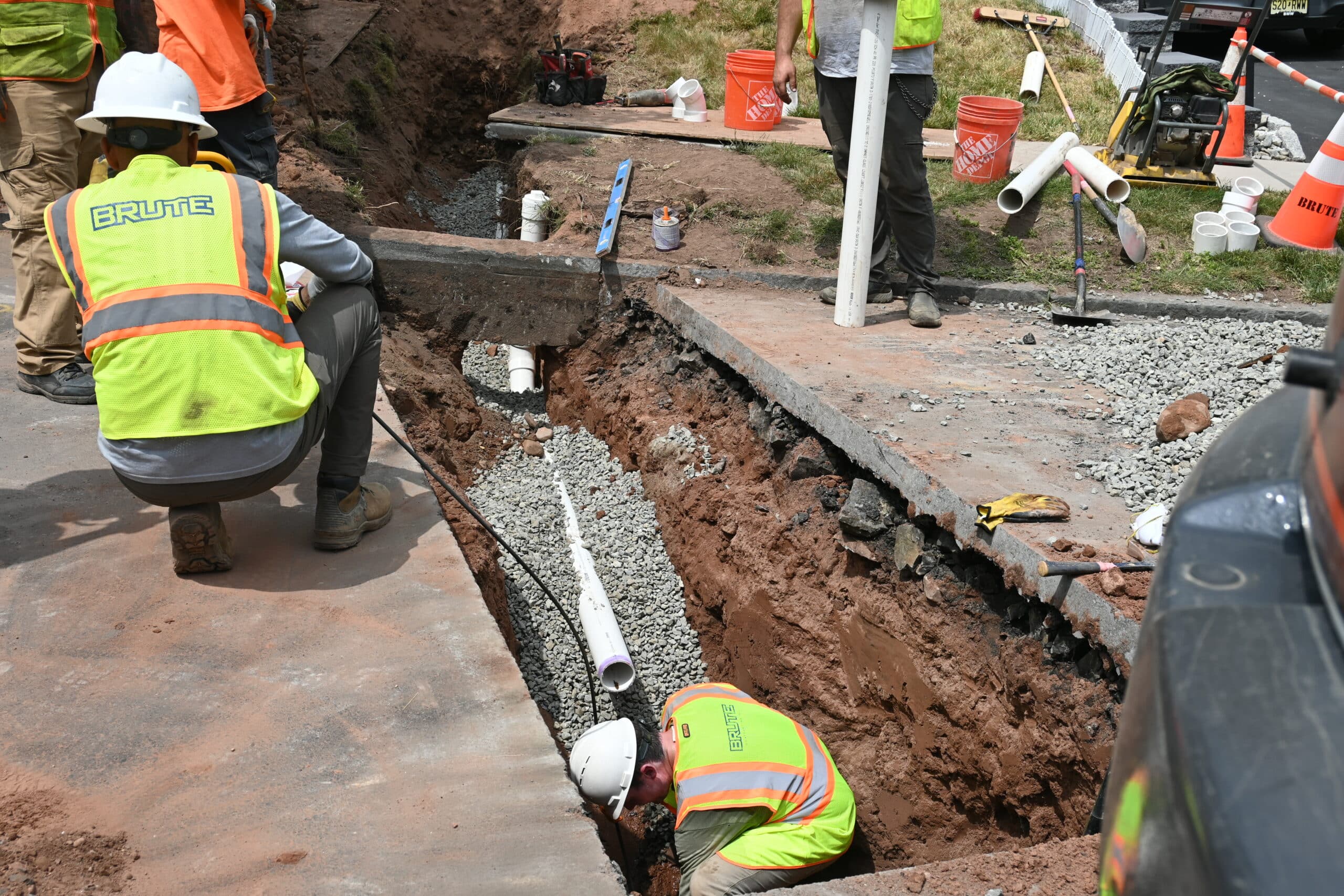There are several sewer line repair options available, ranging from traditional excavation-based methods to modern trenchless technologies. The most suitable option depends on the severity and nature of the sewer line damage. Here are some common sewer line repair options:
- Pipe Patching: Pipe patching is a localized repair method used for minor cracks, holes, or leaks in the sewer line. A flexible patch or sleeve, typically made of epoxy resin, is inserted into the damaged area and inflated, adhering to the inside of the pipe to seal the damage.
- Pipe Lining (Cured-in-Place Pipe or CIPP): Cured-in-place pipe lining is a popular trenchless repair method for moderately damaged sewer lines. A flexible liner coated with resin is inserted into the existing pipe and cured in place, forming a new, seamless inner pipe that covers the damaged areas.
- Pipe Bursting: Pipe bursting is a trenchless replacement method used for severely damaged sewer lines that cannot be repaired. A new pipe is pulled through the old one, breaking the damaged pipe apart, and the new pipe takes its place.
- Excavation and Replacement: For extensive damage or collapsed sewer lines, excavation and replacement may be necessary. The damaged section of the pipe is dug up and removed, and a new pipe is installed in its place.
- Hydro-Jetting: Hydro-jetting is a method used to clear blockages and remove debris from sewer lines. High-pressure water is directed through the pipes, flushing out buildup and restoring proper flow.
- Mechanical Snaking: For stubborn clogs and minor blockages, a mechanical snake or auger is used to clear the obstruction and restore flow.
- Root Removal: If tree roots have infiltrated the sewer line, special cutting tools or hydro-jetting can be used to remove the roots and prevent future intrusion.
- Epoxy Pipe Coating: Epoxy pipe coating is another trenchless method where a thin layer of epoxy is applied to the interior of the existing pipe, sealing minor leaks and preventing corrosion.
The choice of repair option will depend on factors such as the extent of damage, accessibility of the sewer line, budget considerations, and local regulations. Trenchless methods are generally preferred because they minimize disruption, reduce the need for extensive excavation, and offer a faster and more cost-effective solution. However, traditional excavation and replacement may be necessary in some cases where the damage is severe or the existing pipes are beyond repair. It’s best to consult with a professional plumbing or sewer repair company to assess the specific issue and recommend the most appropriate repair option for your sewer line. If you need a sewer line service call us at (201) 581-3740 or fill out our contact form.


